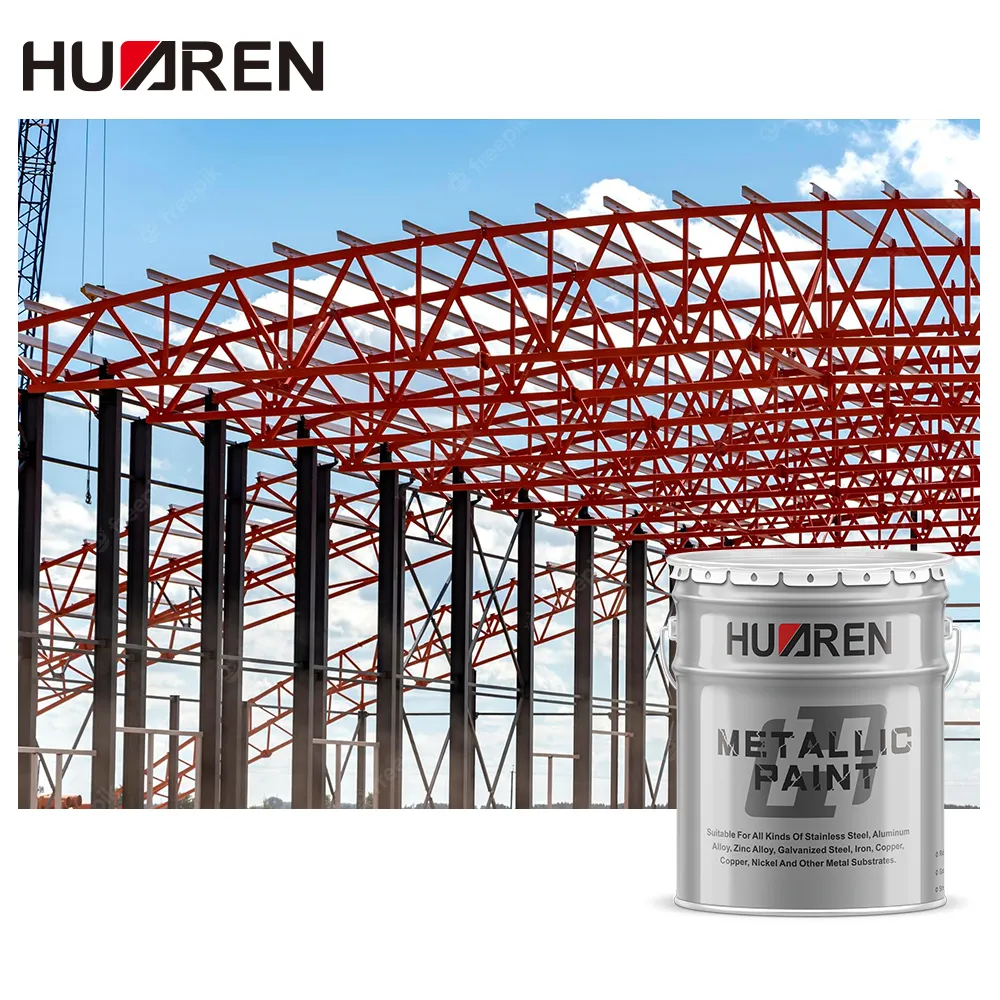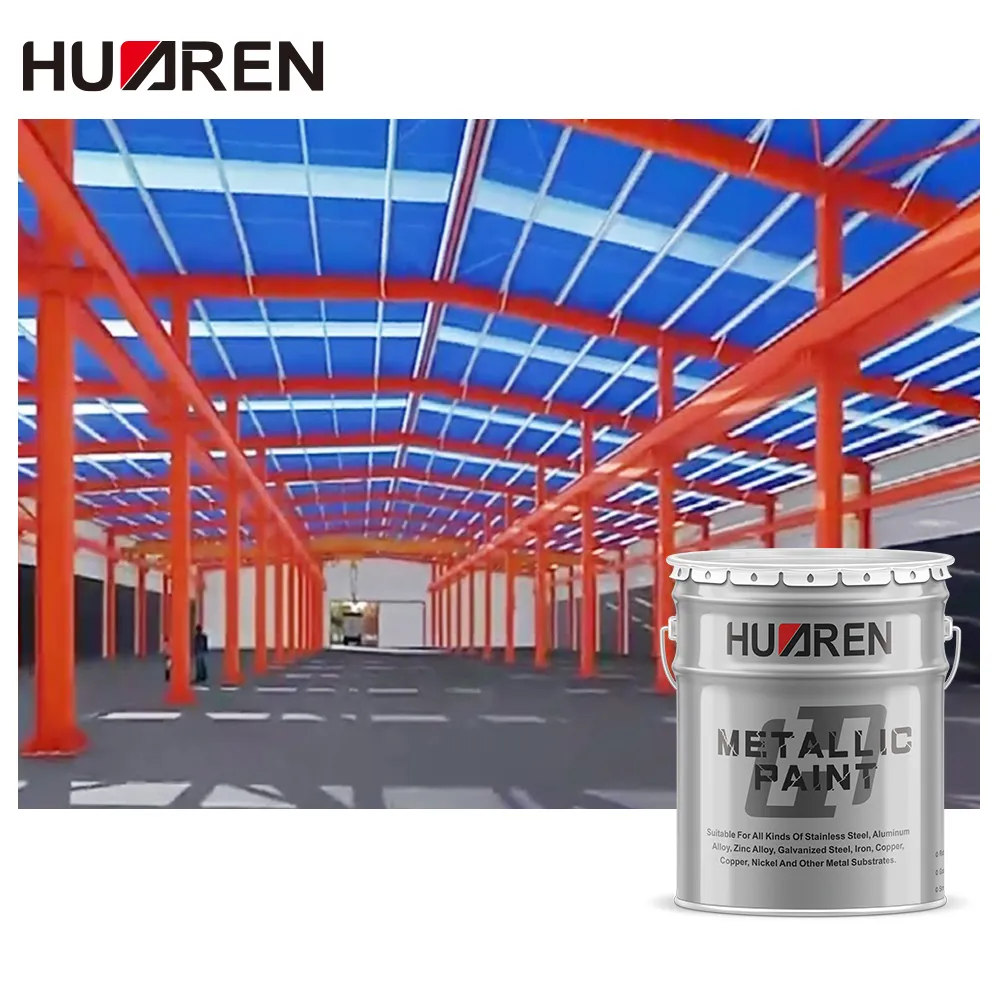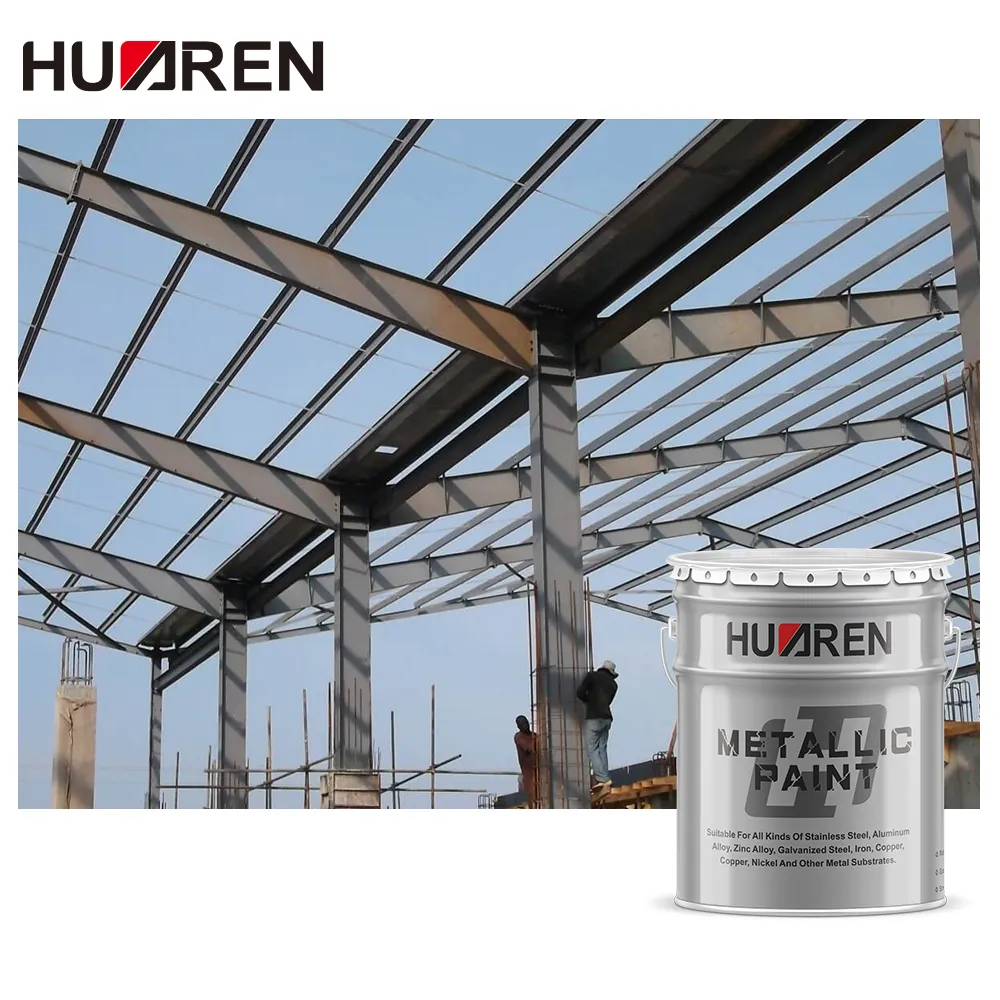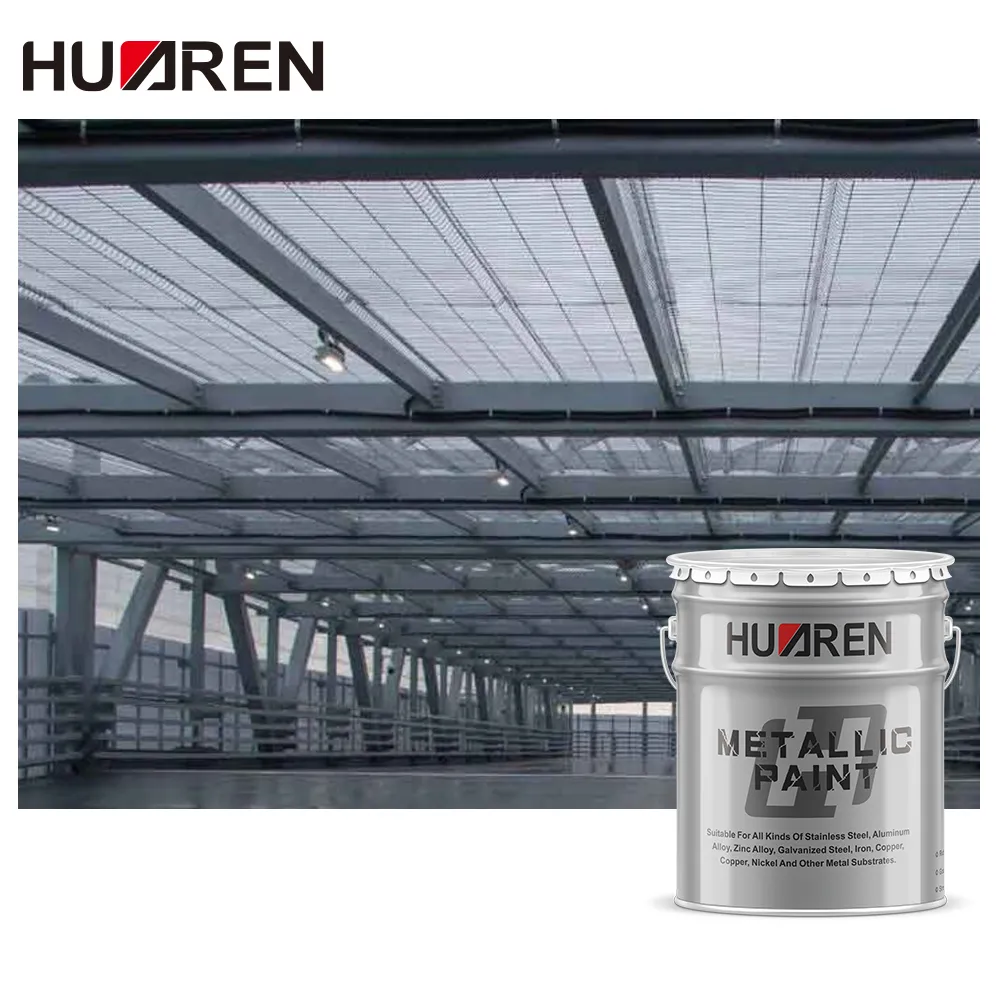In modern industry, metal structures and equipment are often exposed to various corrosive environments, such as oceans, chemical plants, and humid climates. These environments pose great challenges to the long-term use of metals, so anti-corrosion measures have become one of the important means to ensure the long-term use of metal equipment and structures. Among the many anti-corrosion coatings, zinc rich primer has received widespread attention due to its excellent anti-corrosion performance.
This article will explore in depth what zinc rich primer is, its unique anti-corrosion mechanism, and its application in industry.

What is zinc rich primer?
Zinc rich primer is a high-performance anti-corrosion coating, mainly composed of a large amount of zinc powder and film-forming substances (such as epoxy resin, alkyd resin, etc.). Zinc rich primer is coated on the metal surface to form a protective film rich in zinc powder, thereby providing long-term anti-corrosion protection.
Composition of zinc rich primer
The main components of zinc rich primer include zinc powder, film-forming substances, additives and solvents. Zinc powder is the core component of zinc rich primer, and its content usually accounts for more than 70% of the coating. The high content of zinc powder gives zinc rich primer special anti-corrosion properties. In addition, the film-forming substance plays a role in fixing zinc powder on the metal surface and providing a certain physical barrier effect. Commonly used film-forming substances include epoxy resin, alkyd resin, etc. Different types of film-forming substances will affect the performance and application occasions of zinc rich primer.
Classification of zinc rich primer
According to the different film-forming substances, zinc rich primer is mainly divided into the following categories:
● Zinc rich epoxy primer: With epoxy resin as the film-forming substance, it has excellent adhesion and chemical resistance and is widely used in chemical equipment, bridges, ships and other fields.
● Inorganic zinc rich primer: With silicate as the film-forming substance, it has better high temperature resistance and is suitable for environments that need to withstand high temperature or flames, such as oil platforms, pipelines, etc.
● Alkyd zinc rich primer: With alkyd resin as the film-forming substance, it is suitable for some environments with medium anti-corrosion requirements, such as building steel structures, equipment housings, etc.
Different types of zinc rich primers have their own characteristics in application scenarios and anti-corrosion properties. The selection of appropriate zinc rich primer needs to be determined according to the specific use environment and requirements.

What is the anti-corrosion mechanism of zinc rich epoxy primer?
The reason why zinc rich epoxy primer can effectively prevent metal corrosion is mainly due to its unique anti-corrosion mechanism. Zinc rich epoxy primer can not only provide a physical barrier, but also delay or prevent metal corrosion through an electrochemical protection mechanism.
Cathodic protection effect
The core anti-corrosion mechanism of zinc rich primer is through the cathodic protection of zinc powder. When zinc rich epoxy primer is coated on the metal surface, the zinc powder particles are in direct contact with the metal to form a micro-battery. Since the electrochemical potential of zinc is more negative than that of iron, in the corrosive medium, zinc preferentially undergoes oxidation reaction (i.e. corrosion) and sacrifices itself to protect the metal substrate. This sacrificial anode effect effectively delays the corrosion of the substrate and provides long-term protection.
● Micro-battery effect: In the micro-battery formed by zinc and iron in zinc rich epoxy primer, zinc is oxidized as the anode, while iron is protected as the cathode. This electrochemical reaction will continue until the zinc is completely consumed.
● Corrosion product protection: During the zinc oxidation process in zinc rich epoxy primer, the generated zinc salts (such as zinc oxide, zinc hydroxycarbonate, etc.) will be deposited on the metal surface, further preventing the penetration of corrosive media and enhancing the protection effect.
Physical barrier effect
In addition to cathodic protection, zinc rich epoxy primer can also provide a physical barrier effect. After curing, the film-forming substance forms a dense coating to block external moisture, oxygen and other corrosive media. This physical barrier effect also plays a vital role in the anti-corrosion system of zinc rich epoxy primer.
● Density of the coating: The film-forming substance of zinc rich epoxy primer can form a continuous coating on the metal surface, reducing the penetration path of corrosive media.
● Adhesion: The good adhesion of zinc rich epoxy primer ensures the long-term stability of the coating, which is not easy to peel off, thereby providing continuous protection.

What are the application areas of zinc rich primer?
Due to its excellent anti-corrosion performance, zinc rich primer has been widely used in many industrial fields. Here are some of the main application scenarios of zinc rich primer:
Marine environment
Metal structures in the marine environment, such as ships, offshore platforms, and dock facilities, are exposed to salt spray and humid environments for a long time, and the risk of corrosion is extremely high. Zinc rich epoxy primer has become the preferred coating for corrosion protection of these facilities due to its excellent cathodic protection.
● Ship corrosion protection: Zinc rich epoxy primer is often used on the bottom and near the waterline of ships, which are most susceptible to seawater corrosion. By coating with zinc rich primer, the service life of the ship can be significantly extended.
● Offshore platform: Offshore oil platforms operate in harsh marine environments, and zinc rich primer provides them with reliable corrosion protection to ensure the structural safety of the platform.
Industrial facilities
In heavy industrial environments such as chemical plants and refineries, equipment and pipelines are often exposed to corrosive chemicals. The chemical resistance and long-term corrosion resistance of zinc rich primer make it an important protective barrier for these facilities.
● Storage tanks and pipelines: The tanks and pipelines of chemical plants often store corrosive liquids. By coating with zinc rich epoxy primer, these equipment are effectively protected, reducing the risk of leakage and failure.
● High temperature equipment: In some applications that require high temperature resistance, such as heating furnaces and chimneys in refineries, zinc rich epoxy primer shows good thermal stability.
Infrastructure
Large infrastructure such as bridges, tunnels, and steel structure buildings usually need to face long-term wind, rain, and air pollution. Zinc rich primer, as an efficient anti-corrosion coating, is widely used in the surface protection of these infrastructures.
● Bridge steel structure: Bridge steel structure is exposed to the outdoors and is susceptible to atmospheric corrosion. Zinc rich primer can effectively extend the service life of the bridge and reduce maintenance costs.
● Elevated and tower: The application of zinc rich primer in large steel structures such as elevated and tower can ensure the long-term safety of the structure and reduce the safety hazards caused by corrosion.

What is the construction process of zinc rich primer?
The construction process of zinc rich primer is crucial to its anti-corrosion effect. Only through the correct construction method can the anti-corrosion performance of zinc rich primer be fully utilized. The following are some key steps in the construction of zinc rich primer:
Surface treatment
Surface treatment is the first and most critical step in the construction of zinc rich primer. Before applying zinc rich primer, the metal surface must be thoroughly cleaned to remove rust, scale, oil and other impurities. Common surface treatment methods include sandblasting, grinding and chemical treatment.
● Sandblasting: Sandblasting is a common method of surface treatment, which can effectively remove rust and scale on the surface, while forming appropriate roughness on the metal surface to improve the adhesion of zinc rich primer.
● Chemical treatment: For some metal surfaces that are not suitable for mechanical treatment, chemical treatment methods such as pickling and phosphating can be used to clean and pretreat the surface.
Ratio and mixing of zinc rich primer
Zinc rich primer is usually a two-component or multi-component coating, which needs to be mixed in proportion before use. The mixed coating should be used as soon as possible to ensure the uniformity and adhesion of the coating.
● Mixing ratio: Different types of zinc rich primer have different mixing ratios. During construction, the ratio in the product manual should be strictly followed.
● Stir evenly: After mixing, stir thoroughly to make the zinc powder evenly distributed in the coating to ensure the anti-corrosion performance of the coating.
Brushing method
Zinc rich primer can be applied by brushing, rolling or spraying. The selection of the appropriate application method depends on the coating area, coating thickness requirements and construction environment.
● Brushing: Suitable for small areas or areas requiring delicate operations. The advantage of brushing is flexible operation, but the efficiency is low.
● Rolling: Suitable for large-area construction. Rolling efficiency is high, but care should be taken to avoid bubbles and sagging.
● Spraying: Spraying is one of the most commonly used application methods for zinc rich primer. It can form a uniform coating and is especially suitable for coating large areas and complex structures.
Huaren Chemical Industry Co., Ltd. is a professional manufacturer committed to delivering premium industrial paints and resins. Operating 30 advanced production lines in China, we produce high-quality products such as zinc rich epoxy primer, nitrocellulose paints, and heavy-duty anti-corrosion coatings. Our solutions are designed to meet the needs of industries like petrochemicals, construction, and machinery.

